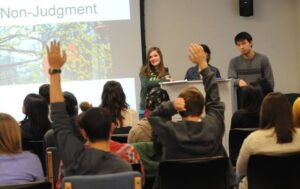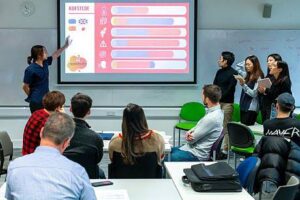Back to: Environmental Biology 300 Level
Welcome to class!
My brilliant friend, have you ever visited a beautiful forest reserve or watched a documentary about wildlife being saved from extinction? What if I told you Nigeria has some amazing success stories in conserving nature, even in the face of challenges like deforestation, pollution, and poaching? Today’s lesson brings you into the heart of real-life Nigerian stories where communities, scientists, and governments came together to protect our environment—and it worked.
Student Presentations
What are Conservation Programs?
Conservation programs are organised efforts to protect natural environments, wildlife, and resources for future generations. These programmes involve protecting endangered species, managing forests and water bodies, restoring damaged ecosystems, and promoting sustainable use of nature’s resources.

In Nigeria, where pressures from urbanisation, farming, oil exploration, and hunting threaten our ecosystems, conservation programs are essential. Let’s now explore real, successful efforts that have made a difference.
Case Study 1: Yankari Game Reserve, Bauchi State
Yankari is Nigeria’s largest wildlife park, home to elephants, lions, baboons, and many more species. Once under threat due to poor funding and poaching, the Bauchi State Government stepped in to restructure the park’s management. They improved security, trained rangers, built tourist lodges, and introduced entry fees to generate funds. As a result, elephant populations increased, and tourism boosted local employment. It’s now one of the most visited conservation sites in Nigeria.
Case Study 2: Lekki Conservation Centre, Lagos
Right in the heart of Lagos, this urban conservation site protects wetlands and mangrove forests while educating the public. Managed by the Nigerian Conservation Foundation (NCF), the centre introduced a 401-metre canopy walkway—the longest in Africa—to attract tourists and students. The project has protected endangered species like the Mona monkey and bushbuck while raising awareness on biodiversity conservation among urban residents.
Case Study 3: Cross River National Park
Located in southeastern Nigeria, this park is one of the richest in biodiversity. Home to rare species like the Cross River gorilla, it faced threats from logging and farming. However, strong collaboration between the Federal Government, international bodies like WWF, and local communities led to forest patrols, buffer zone farming, and community education. Villagers were trained in eco-friendly farming and eco-tourism, reducing pressure on the forest.
Case Study 4: Nigeria Erosion and Watershed Management Project (NEWMAP)
Soil erosion has devastated parts of southeastern Nigeria. NEWMAP, supported by the World Bank and the Nigerian government, launched in states like Anambra, Abia, and Edo to tackle this. It used modern engineering (like gully reclamation), community involvement, and reforestation. Lives, farmlands, and roads were saved—and communities became part of the solution through training and employment.
Key Lessons from These Programs
Government and community collaboration is crucial.

Education and awareness raise public involvement.
Eco-tourism provides income and motivation for conservation.
Strong policies and local leadership sustain long-term success.
Data collection and monitoring help track progress and adjust strategies.
Summary
- Conservation programs protect ecosystems, wildlife, and resources for future use.
- Yankari Game Reserve succeeded through improved security and tourism.
- Lekki Conservation Centre used education and eco-tourism to protect urban biodiversity.
- Cross River National Park combined local participation with global support to protect endangered species.
- NEWMAP tackled erosion using engineering, reforestation, and community solutions.
Evaluation
- Define a conservation program in your own words.
- Mention two major successes from the Yankari Game Reserve case.
- How has the Lekki Conservation Centre promoted urban conservation?
- What made Cross River National Park successful in protecting gorillas?
- Describe the focus and achievement of the NEWMAP project.
You’re doing excellently! These stories prove that environmental change is not just possible—it’s already happening. And you, as a future environmental leader, are part of the next chapter. Keep your passion alive. Afrilearn is always here to help you grow
